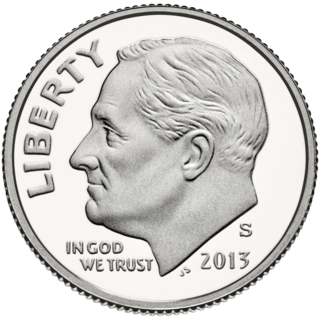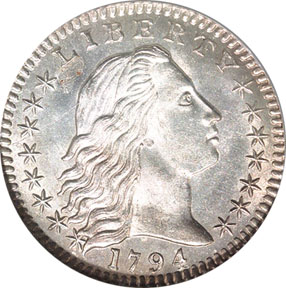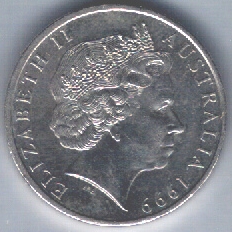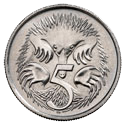A ten-cent coin or ten-cent piece is a coin minted for various decimal currencies worth 10 cents.
A coin is a small, flat, (usually) round piece of metal or plastic used primarily as a medium of exchange or legal tender. They are standardized in weight, and produced in large quantities at a mint in order to facilitate trade. They are most often issued by a government.
Decimalisation is the conversion of a measurement system to units related by powers of 10, replacing traditional units that are related in other ways, such as those formed by successive doubling or halving, or by more arbitrary conversion factors. Units of physical measurement, such as length and mass, were decimalised with the introduction of the metric system, which has been adopted by almost all countries with the prominent exception of the United States. Thus a kilometre is 1000 metres, while a mile is 1,760 yards. Electrical units are decimalised worldwide. Common units of time remain undecimalised; although an attempt was made during the French revolution, this proved to be unsuccessful and was quickly abandoned.

In many national currencies, the cent, commonly represented by the cent sign is a monetary unit that equals 1⁄100 of the basic monetary unit. Etymologically, the word cent derives from the Latin word "centum" meaning hundred. Cent also refers to a coin worth one cent.
Examples include:
- the United States ten-cent coin, better known as the US dime
- the Canadian ten-cent coin, better known as the Canadian dime
- the Australian ten-cent coin
- the New Zealand ten-cent coin
- the Hong Kong ten-cent coin
- the Singapore ten-cent coin
- the Brunei ten-cent coin
- the dubbeltje, ten-cent coin of the decimal Dutch guilder (Netherlands)
- the 10 cent euro coin used in several European countries known as the eurozone
- the Namibian ten-cent coin
- the ten-cent coin of the South African rand
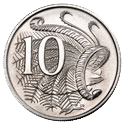
The Australian ten-cent coin is a coin of the decimal Australian dollar. When the dollar was introduced as half of an Australian pound on 14 February 1966, the coin inherited the specifications of the pre-decimal shilling; both coins were worth one twentieth of a pound. On introduction it was the fourth-lowest denomination coin. Since the withdrawal from circulation of the one and two cent coins in 1992, it has been the second-lowest denomination coin in circulation.
The New Zealand ten-cent coin is the lowest-denomination coin of the New Zealand dollar. The 10-cent coin was introduced when the New Zealand dollar was introduced on 10 July 1967, replacing the New Zealand shilling coin. In 2006 its size was reduced as part of a revision of New Zealand's coins, which also saw its alloy become copper-plated steel.
The ten-cent coin is the lowest-denomination circulating coin of the Hong Kong dollar. With a diameter of 17.5 mm and a mass of 1.85 g it is also the smallest in size and weight. It is the oldest coin denomination to still be in circulation in Hong Kong. Since its first issue in 1863, there has only been one period (1942–1947) where the coin was not in use.

